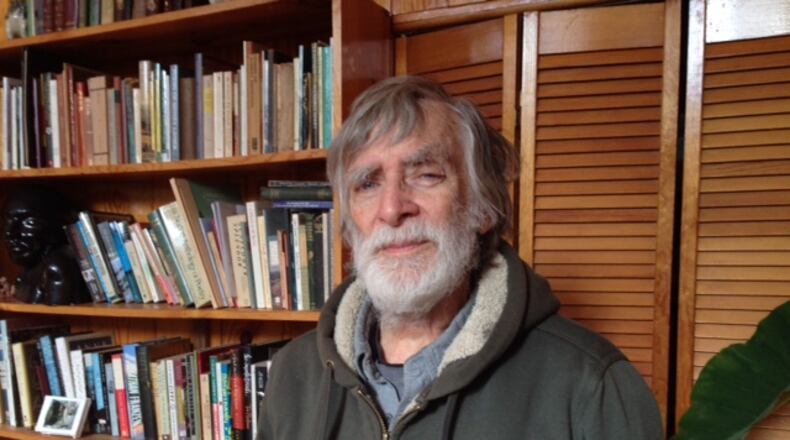For the First Week of Early Winter
Moon Time: The Paperwhite Moon, bringing more holiday paperwhite bulbs into bloom, wanes into its final quarter on December 10 at 2:51 a.m. Rising late at night and setting near midday, this moon passes overhead before dawn.
Sun Time: On December 14, sunset begins to occur a minute later every two to three days. This small advance, however, is offset by the Sun rising later in the morning. And the point-counterpoint of time lost and gained creates a weeklong standoff around winter solstice during which the day's length remains its shortest of the year, nine hours and twenty minutes in this location.
Planet Time: Mars and Jupiter are the morning stars together in Libra this week.
Star Time: Traveling relatively close to Mars and Jupiter is the bright star, Arcturus (the fourth-largest star in the sky), just west of those planets. Low in the northeast, Vega is rising
Shooting Star Time: No shooting stars this week, but if you wait until the 21st, when the moon is still dark, you may be able to see the Ursid Meteors.
Weather Time: The December 15 Front: This cold wave can bring below-zero temperatures as far south as Tennessee, and double-digit below-zero temperatures enter the realm of possibility in the Ohio Valley.
Zeitgebers: Events in Nature that Tell the Time of Year: The second week of December brings duck migration season and honeysuckle leafdrop season to a close in Clark County. For ducks on the northern Atlantic seaboard, the season of movement to coastal waters starts as ice covers inland ponds and lakes. Almost every leaf has usually fallen by this time of December; even the most stubborn Osage, pear and beech are down. Trunks of the rusty-barked river birches and the white birches contrast with the red-twigged dogwoods, and with the black trunks of oaks and elms. Woodchuck and bat hibernating seasons are underway throughout southwestern Ohio. Redpoll season arrives in the Northeast, and mistletoe gathering season and brown pelican nesting season commence along the Gulf of Mexico.
Farm and Garden Time: December 18 is new moon day. Plan to seed your bedding plants under lights with gentle radiant heat provided below the flats if possible). Root grape vine cuttings, too, Check on bulbs that you dug up in autumn, making sure they are not getting moldy.
Marketing Time: Hanukkah begins on December 12, and Christmas is only two weeks away. As harvest time winds down for grain crops, the holiday market becomes stronger. Christmas cacti, dried flower arrangements, grapevine wreaths and bulbs for forcing may sell briskly at farmers' markets, offering welcome income to the small farmer and hobbyist.
Mind and Body Time: The fourth-quarter moon is most benign during the early days of the week, so plan to do your shopping as soon as you can (the weak moon making shopping less stressful). As the moon darkens, however, (becoming new on the 18th) you may become more susceptible to attacks of asthma; one study has shown a positive correlation between new or full moons and respiratory incidents.
Creature Time: The waning moon will be overhead in before sunup this week; fish and game should be most active at that time. The period prior to the arrival of the December 15 weather system provides the best morning conditions for seeking fish and game. Be alert for pressure on your flock or herd from predators as the cold deepens.
Journal
December 4, 1992: To the woods this afternoon, cloudy, 40 degrees, light breeze: Clover foliage keeping the paths green, with some dandelions, some plantain. Wind in the dry grass, oak leaves rustling, distant crows intermittent, no other birds for the first miles. Then the scream of a robin as though he were frightened or had been attacked.
Moss was still bright beside me, became the dominant green in the woods. A few red raspberry leaves at the top of the hill, an occasional bank of honeysuckle berries. Nettles, protected by wild roses, were growing back in the valley, a foot tall. Top sweet gum seed balls were holding on,. Teasel was dark in the dull goldenrod fields.
Osage fruits all yellow on the ground. Pale greens and pastels of the lichens. Then the landscape down the valley: bands of grays and browns above a sky of light stratus clouds. The trees black, pasture chartreuse: a cross section of the winter, veins of this time. Walnut hulls stained the wood purple. Coming back, I saw a pair of flickers; they screeched then flew west off toward the river. At my summer fishing hole, three tan moths, between half an inch and an inch wingspan, struggled through the cold. I cast my line out there: only one bite.
Today, the pieces of the last season become.fragments of a new season, Early Winter, the first season of the new year.
OTHER POOR WILL’S ALMANACK COLUMNS
Fall welcomes the Apple Cider Moon, Leonid meteors
Daylight Saving Time comes to an end
First chance for snow flurries
Poor Will’s Almanack for 2018 is now available. Order yours from Amazon, or, for an autographed copy, order from www.poorwillsalmanack.com. You can also purchase Bill Felker’s new book of essays, Home is the Prime Meridian, from those sites.
About the Author
